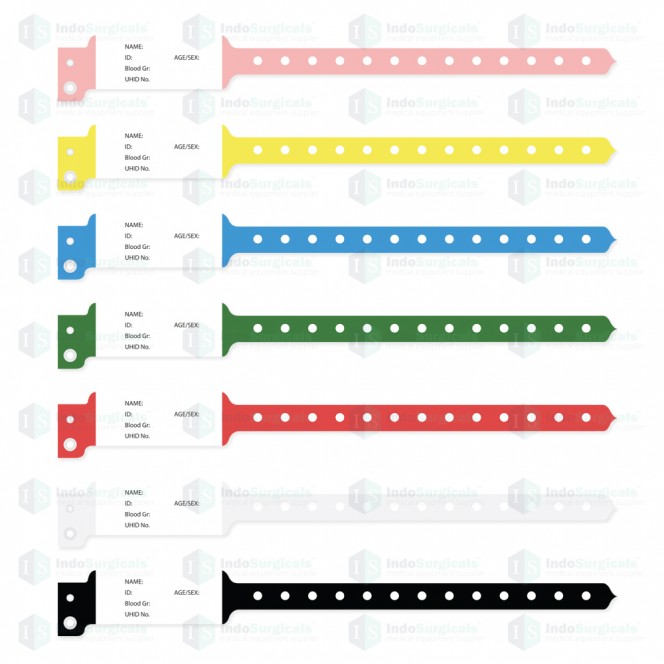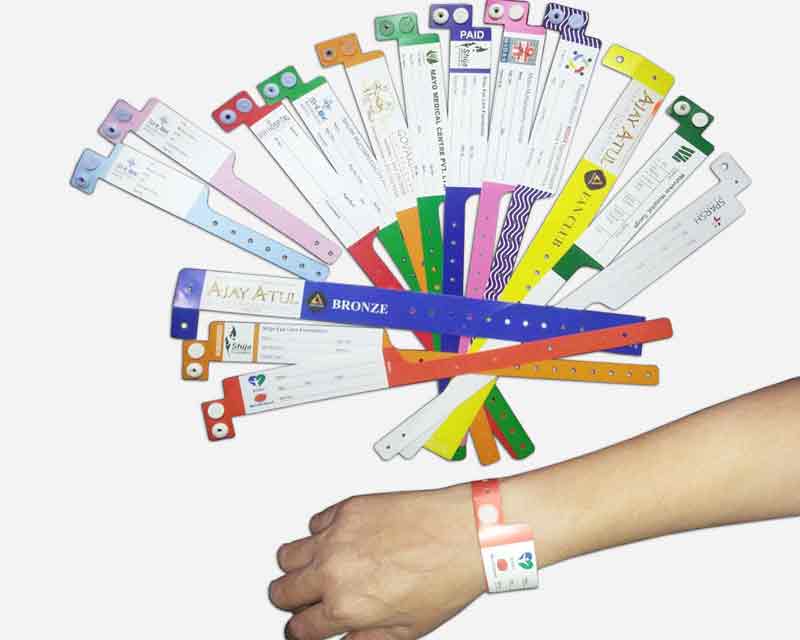A Comprehensive Guide to the Different Types of Patient Identification Band
A Comprehensive Guide to the Different Types of Patient Identification Band
Blog Article
Checking Out the Different Sorts Of Patient Identification Band Used in Medical Facilities
In the complex world of medical care, the important duty of Patient Identification bands commonly goes undetected. These bands, differing from simple paper wristbands to advanced RFID bands, create the foundation of Patient security methods, ensuring accuracy in Patient Identification.
Recognizing the Value of Patient Identification Bands
While they may seem like plain accessories, Patient Identification bands play an important role in clinical facilities. These bands offer as an important device for confirming Patient identity, protecting against medical errors connected to misidentification. Patient Identification bands additionally aid in simplifying management jobs, guaranteeing accurate record-keeping and invoicing.
Typical Paper Wristbands: Their Use and Limitations
Standard paper wristbands have actually been a staple in Patient Identification throughout different clinical facilities. While their usage prevails, they harbor specific limitations that might impact their performance in Patient administration. This area will concentrate on the range of their application and the inherent disadvantages related to their use.
Paper Wristbands: Usage Range
In the world of Patient Identification, paper wristbands have long held a crucial function. These bands are commonly used in outpatient setups, where the Patient's remain is short-lived. Despite developments in modern technology, the modest paper wristband remains a cost-effective and trustworthy remedy for Patient Identification in numerous healthcare situations.
Limitations of Paper Wristbands
Regardless of their prevalent usage, paper wristbands are not without their disadvantages. Their physical toughness is one of the significant restrictions. Direct exposure to water, sweat, or rough handling can provide them unreadable or even trigger them to degenerate. In addition, paper wristbands often lack the technological abilities of more modern alternatives, such as barcoding or RFID chips, limiting their functionality to simply presenting written details. The failure to upgrade or customize the data on the wristband is another shortcoming. Additionally, if the details is transcribed, legibility can be endangered, leading to possible misidentification. Ultimately, paper wristbands can create discomfort or skin irritation to some people, especially when put on for extensive durations.
Barcoded Wristbands: Developments in Patient Identification
While Patient Identification has long been a vital aspect of medical care, the development of barcoded wristbands indicates a considerable jump ahead. These bands leverage the simpleness of barcoding innovation, permitting Patient information to be swiftly scanned and accessed. They boost the rate and accuracy of Patient Identification, reducing the danger of clinical errors connected to misidentification. Barcoded wristbands are cost-efficient, easy to produce, and remove handwriting errors typical with hands-on systems. They are not without constraints. While they use enhancements over traditional bands, the barcode can become used or smudged, providing it unreadable. In spite of this, barcoded wristbands remain a necessary device in contemporary medical care settings, symbolizing the crossway of modern technology and Patient care.
Superhigh Frequency Identification (RFID) Bands: an Action Towards Futuristic Health Care
The advancement of Patient Identification bands has actually caused the appearance of Radio Regularity Identification (RFID) Bands (patient identification band). These cutting-edge devices present crucial advantages for medical care facilities, providing a much more efficient and technologically progressed ways of Patient Identification. The application of RFID in health care is a considerable check out here step towards an extra advanced method to Patient monitoring and security
Comprehending RFID Bands

RFID Bands: Trick Benefits
Embracing a future where innovation and healthcare merge, superhigh frequency Identification bands supply a number of essential benefits. Mainly, these bands enhance Patient safety by giving exact, instantaneous Identification, therefore minimizing medical errors. RFID bands can keep a vast amount of Patient information, including medical history and allergic reactions, making it possible for customized care. They additionally enhance administrative jobs, as the automated information entry changes hands-on processes, boosting effectiveness and reducing paperwork. In addition, RFID bands use real-time tracking of people, essential in risky environments such as surgical procedure or extensive care. These bands are resistant and long lasting to environmental variables, making sure regular performance. On the whole, RFID bands represent a significant innovation in Patient Identification modern technology, benefiting both individuals and doctor.
Applying RFID in Medical Care
These bands offer a smooth way to track and identify clients, ensuring their security and improving effectiveness in treatment procedures. RFID look at these guys bands reduce clinical mistakes by supplying precise Patient Identification, which is critical in protecting against misdiagnosis or incorrect medication administration. Thus, the execution of RFID bands is a considerable action towards enhancing Patient safety and security and health care delivery.

Color-Coded Wristbands: Helping in Quick and Accurate Medical Diagnosis
In the busy atmosphere of a clinical facility, color-coded wristbands have actually arised as crucial tools for swift and accurate Identification of a person's medical condition. These wristbands, put on by clients, lug particular shades that correspond to different clinical problems or statuses. i thought about this This system is developed to supply immediate visual hints to medical care providers, improving Patient safety and care high quality.
Methods for Reliable Application and Administration of Patient ID Bands
Achieving ideal usage of Patient Identification bands demands a well-structured strategy for their implementation and administration. The very first step involves training all health and wellness employees on the significance of properly using and reading these bands. Hospitals must systematize the use of ID bands across all departments, making sure harmony and decreasing disparities. Routine audits ought to be conducted to validate adherence to policies and to correct any kind of incongruities. Patient education is likewise critical; patients must comprehend the function of the bands and the demand for their continuous wear. patient identification band. It's essential to have a back-up strategy in area, such as barcode scanning or biometrics, to make sure that Patient Identification is never endangered.
Conclusion
Patient Identification bands are vital in medical facilities to guarantee safety and accuracy. Efficient execution and administration of these bands can dramatically lower medical errors, improve performance, and improve overall Patient care.
These bands, differing from straightforward paper wristbands to innovative RFID bands, form the backbone of Patient security procedures, ensuring precision in Patient Identification.The evolution of Patient Identification bands has actually brought regarding the appearance of Radio Regularity Identification (RFID) Bands. On the whole, RFID bands stand for a significant advancement in Patient Identification technology, benefiting both people and medical care companies.
RFID bands minimize medical errors by offering precise Patient Identification, which is crucial in preventing misdiagnosis or wrong medicine management. Patient education and learning is likewise important; individuals need to comprehend the purpose of the bands and the need for their constant wear.
Report this page